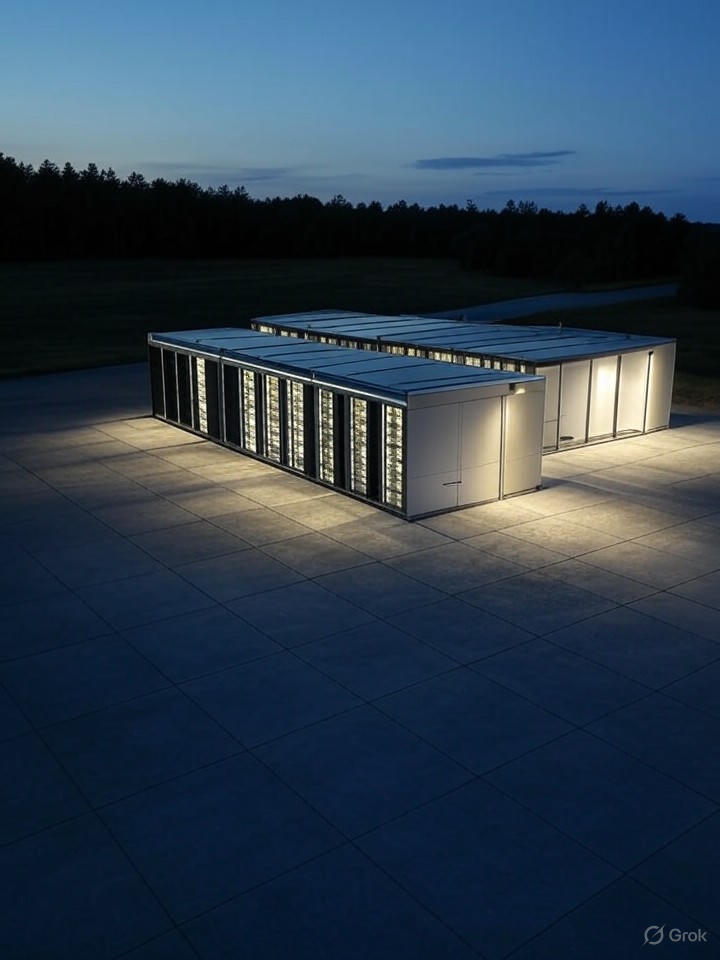In the heart of America’s technological boom, data centers are emerging as voracious consumers of economic resources, devouring billions in investments while often sitting idle or underutilized. A recent analysis in Fortune highlights this paradox: these facilities, built to power the AI revolution, are gobbling up capital and energy at an unprecedented rate, yet many operate far below capacity, raising questions about sustainability and efficiency in the digital age.
The economic footprint is staggering. Industry projections suggest that by 2030, U.S. data centers could account for up to 8% of the nation’s total electricity demand, up from about 4% today, according to a report from the International Energy Agency referenced in recent web analyses. This surge is driven by the explosive growth of artificial intelligence, which requires immense computational power, but the mismatch between supply and actual usage is creating inefficiencies that ripple through the economy.
The Hidden Costs of Overbuilding
Investors are pouring trillions into data center infrastructure, with estimates from McKinsey indicating a potential $5 trillion in global spending by 2030 to meet AI-driven demands. Yet, as Fortune details, utilization rates in many facilities hover around 20-30%, meaning vast swaths of servers hum away unused, wasting energy and capital. This overbuilding is partly fueled by speculative demand from tech giants like Google and Amazon, who race to secure capacity amid fears of shortages.
On the energy front, the strain is already evident. Posts on X from industry observers, including analyses shared by World of Statistics, project U.S. data center energy consumption climbing from 147 terawatt-hours in 2023 to 606 TWh by 2030—a quadrupling that could rival the power needs of entire states. The U.S. Department of Energy, in a December 2024 report, warned that domestic usage might double or triple by 2028, prompting utilities to scramble for grid upgrades.
Grid Strains and Economic Ripples
This energy hunger is upending power markets. According to a recent article in Axios, residential electricity costs rose 6.5% nationally between April 2024 and 2025, partly attributable to data center demands. Utilities are filing record rate hikes—$29 billion in one recent period, as noted in X discussions by investment analysts—to fund infrastructure expansions, passing costs onto consumers and businesses alike.
Economically, the impact extends beyond bills. A Jefferies report from June 2024, exploring data centers’ role in shaping energy consumption, points to opportunities in utilities and clean energy sectors but also warns of bottlenecks. In regions like Virginia, home to the world’s largest concentration of data centers, local economies boom with jobs and tax revenue, yet face water shortages and community pushback over noise and land use.
Sustainability Challenges and AI’s Dual Role
Efforts to mitigate these issues are underway, with innovations in cooling and AI optimization promising reductions in power use. A Robotics and Automation News piece from August 2025 details how advanced cooling technologies and renewable integrations could cut emissions, as data centers currently consume about 3% of global electricity. The International Energy Agency’s April 2025 commentary emphasizes AI’s potential to transform energy management, optimizing grids even as it drives demand.
However, the path forward requires policy intervention. The Environmental and Energy Study Institute’s April 2025 article cautions that unchecked growth could strain grids and hinder the shift to carbon-free energy. Industry insiders argue for better demand forecasting and incentives for efficient utilization to prevent data centers from “eating the economy” without delivering proportional value.
Pathways to Efficient Growth
Looking ahead, balancing this growth with economic prudence is key. Visual Capitalist’s May 2025 chart of U.S. data center energy projections underscores the need for strategic investments in edge computing and sustainable designs, as outlined in Brightlio’s recent trends report. By 2026, the Energy Information Administration forecasts a 5% rise in commercial electricity consumption, largely from data centers and crypto operations.
Ultimately, as the AI era accelerates, stakeholders must address underutilization to harness data centers’ potential without undue economic burden. Failure to do so risks inflating costs and delaying broader technological advancements, according to ongoing discussions in outlets like Data Center Dynamics.




 WebProNews is an iEntry Publication
WebProNews is an iEntry Publication